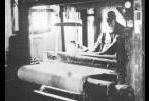Scottish Marriages in the Old Parochial
Registers
By law, couples intending to marry had
to have their intention proclaimed, in the church, on three separate Sundays. The idea was to give the congregation the chance
to bring forward any reasons why they should not marry.
How marriages were recorded varied very much from parish to
parish, and over time. On occasions, up to five instances could be recorded. These were:
The Consignation of Pledges
- this involved the couple paying a deposit. If they (a) subsequently completed the marriage and (b) were not found guilty
of prenuptial fornication (ie the first child appeared at least 9 months after the wedding), they could, in theory, get their
deposit back, although they often had their arms twisted to convert it into a "gift" to the Parish funds. This custom had
pretty well died out by the end of the 18th century
The three separate Proclamations: these were supposed to be on
three separate Sundays. However, there are cases where two, or all three of the Proclamations might be made on the same day.
This again would be in return for a contribution to Parish funds, and was sometimes a way of forestalling problems with the
Session if the first child was likely to make its appearance a little earlier than hoped.
The marriage itself. Often
the wording is "X and Y, having been three times lawfully proclaimed, were today married".
Of these different events,
some Parishes recorded all of them, some only one (often the first Proclamation), in the Register of Marriages. The OPR Index
normally appears to record the date of the marriage, if that was given in the original Register. If not, then the first mention
of the whole marriage process (whether Consignation, Proclamation, or Wedding) is taken as the significant date. The only
way to discover what happened in any case is to view the microfilm of the original Register. Sometimes more detail may be
found in the Kirk Session records, which sometimes record each Proclamation (which was a source of revenue), even if the Register
does not.
Hearth Tax
Hearth Tax was a tax imposed by Parliament
in 1690 in order to raise money to pay off money advanced by shires and burghs, and to pay off army arrears. The tax was imposed
on every hearth within Scotland, and had to be paid by Candlemas (2nd February) 1691. Hospitals and the poor were exempt.
The National Archives of Scotland holds records for all of these payments.
Old Scots Money
Scots money used to be expressed in pounds
or merks, a merk being 13 shillings and 4 pence.
The value between a pound Scots and a pound Sterling was
considerable.
After 1600, the former was worth about 1 shilling and eight pence in the latter currency, the value it remained at before
the abolition of the currency in the following century.
British Census Dates
The census dates for the United Kingdom
of Great Britain and Ireland were as follows:
7th June 1841
31st March 1851
8th
April 1861
3rd April 1871
4th April 1881
6th April 1891
31st March 1901
The most recent census available is the
1901 for Britain, whilst in Ireland, the 1911 census is available.

